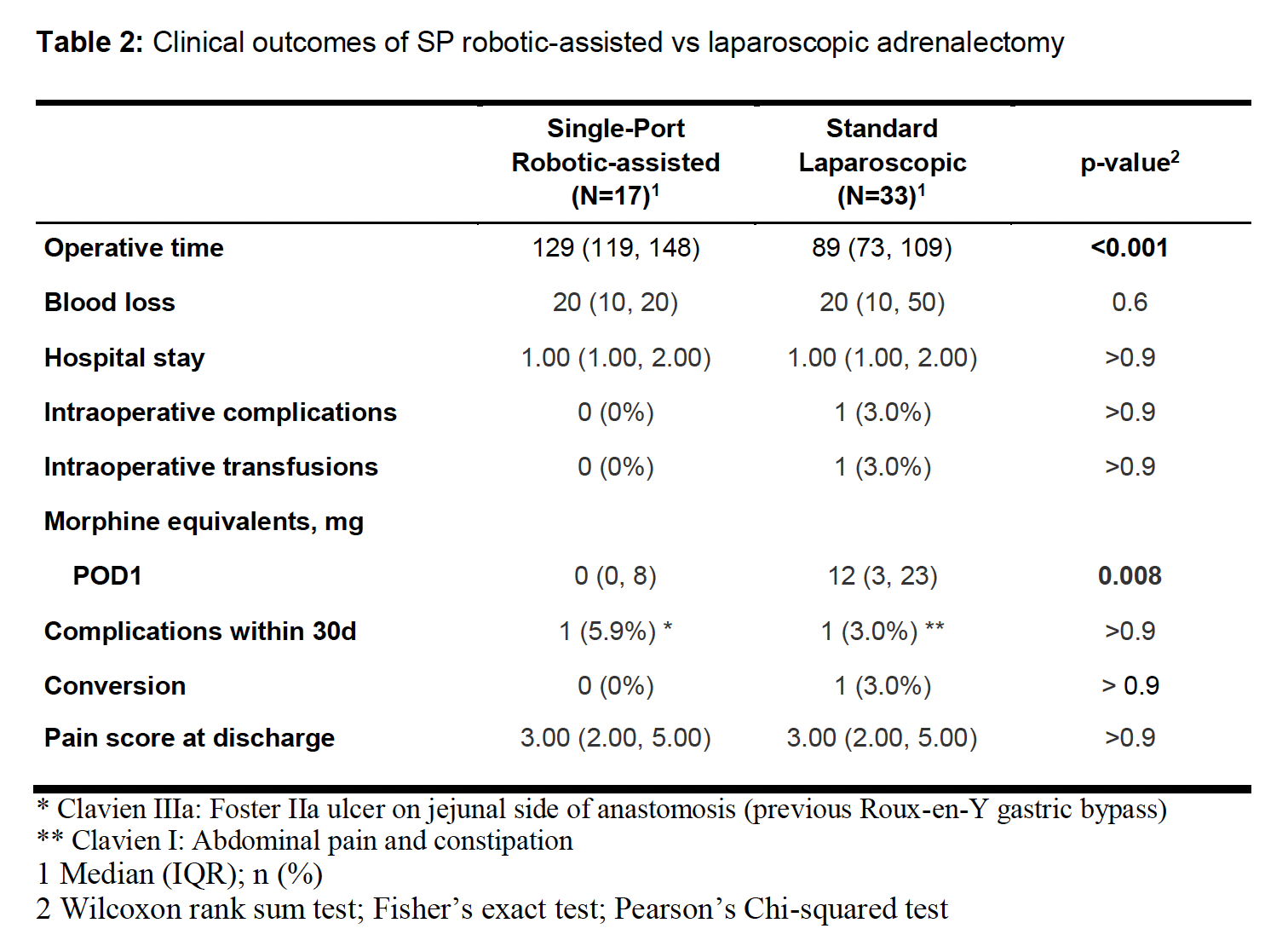Background: Case series have demonstrated equivalent outcomes between multiport robotic-assisted vs. laparoscopic adrenalectomy. The da Vinci single-port (SP) surgical system might be able to improve access to smaller working spaces and thus may be a viable option for adrenal surgery. We compared our early clinical outcomes between SP robotic-assisted and laparoscopic adrenalectomy.
Methods: We extracted data for all SP transperitoneal robotic-assisted and laparoscopic transperitoneal adrenalectomies performed by two surgeons at our institution between January 2016-2024 from our IRB approved, prospectively maintained database. Propensity score matching was performed using the '1:2 nearest neighbor' matching method (discard = control group, caliper = 0.2). Patients were matched for age, gender, BMI and Charlson score. Perioperative outcomes were then compared between the two groups.
Results: Of a total of 141 adrenalectomies performed during our study period, 50 patients were included in the analysis: 17 SP cases were matched to 33 laparoscopic cases (Table 1). SP cases had a longer median operative time (129 vs 89 minutes, p = 0.001). There were no significant differences in estimated blood loss, length of stay (median = 1 day), intraoperative complications, and postoperative complications within 30 days of surgery. Patient-reported pain scores at discharge did not show any significant differences between the two groups. However, the SP group had a significantly lower median use of in-hospital morphine equivalents (0 mg (IQR 0,8) vs 12 mg (IQR 3-23), p = 0.008) compared to the laparoscopic group.
Conclusion: SP adrenalectomy is feasible and safe; however in our early experience, it required significantly longer operative time compared to laparoscopic adrenalectomy. Patients after SP adrenalectomy required less opioids in the postoperative setting. Additional prospective comparative studies are necessary to determine the exact role of the SP approach for adrenalectomy.

